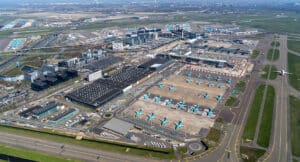At the moment Internet traffic is generated by devices that are connected to the Internet over radio frequencies. In quite many cases the first two hops are based on radio, like Bluetooth and WiFi. There are basically two competing business models, volume based 3GPP and flat fee WiFi. 3GPP volume base is based on the number of devices and in most cases data volume consumed. The WiFi model is based on backhaul capacity.
WiFi has some 75% market share in data volume, but in monetary terms business size is about the same. The WiFi business is inside fixed and cable operators. Going to the future witch model is more likely to win. WiFi has less spectrum, but it is global. WiFi user experience is a bit clumsy but it is “free”. This proposes that people like the WiFi model better, but because of its constraints, 3GPP model is hanging on.
Now we are seeing models where 3GPP frequency is available for organizations based on notification. This sounds like we could have the best of both worlds – non-public networks. CBRS is a reality already in the USA and coming up in Japan and in Germany. Non-public networks have an opportunity to change the situation dramatically. Suddenly we could start seeing local operators servicing local customers and meeting their specific needs. Interestingly development is driven by enterprises.
Industry 4.0 sets a completely new set of requirements for communications and it looks like telecom operators are a bit slow to answer these requests and this provides a motivation to large companies to start their own networks. This is a bit similar to what we saw when telephonies were introduced. Lots of local players. This model has challenges for example how do you operate a network, how do you make sure that all new features are implemented, what happens when you leave your own area etc. This is not a free lunch, but it provides completely new competition to mobile operators. This might also open up new use cases for WiFi air interface. Although the used air interface standard is not the most critical one, but how much output power is allowed to be used and how much spectrum is allocated for these kinds of new networks.
For the governments, giving out spectrum for free is not easy, governments have rented frequencies at very high prices but this is not the model that can be used with the CBRS type model. So this is unlikely to spread very fast, it might be that economical gains are coming from industries and are actually bigger than frequency rent. For operators starting to lose big corporate customers is more painful than losing consumers, because corporate customers tend to have higher ARPU. At the moment we don’t see that large areas would be covered by CBRS type networks, but who knows how it will develop. CBRS networks will also need fiber backhaul so that will bring in some money to operators. It is a kind of WiFi but with a booster. So it might be that in the 30’s we’ll live in a world where access networks are based on common radio resources and competition is on backhaul.






